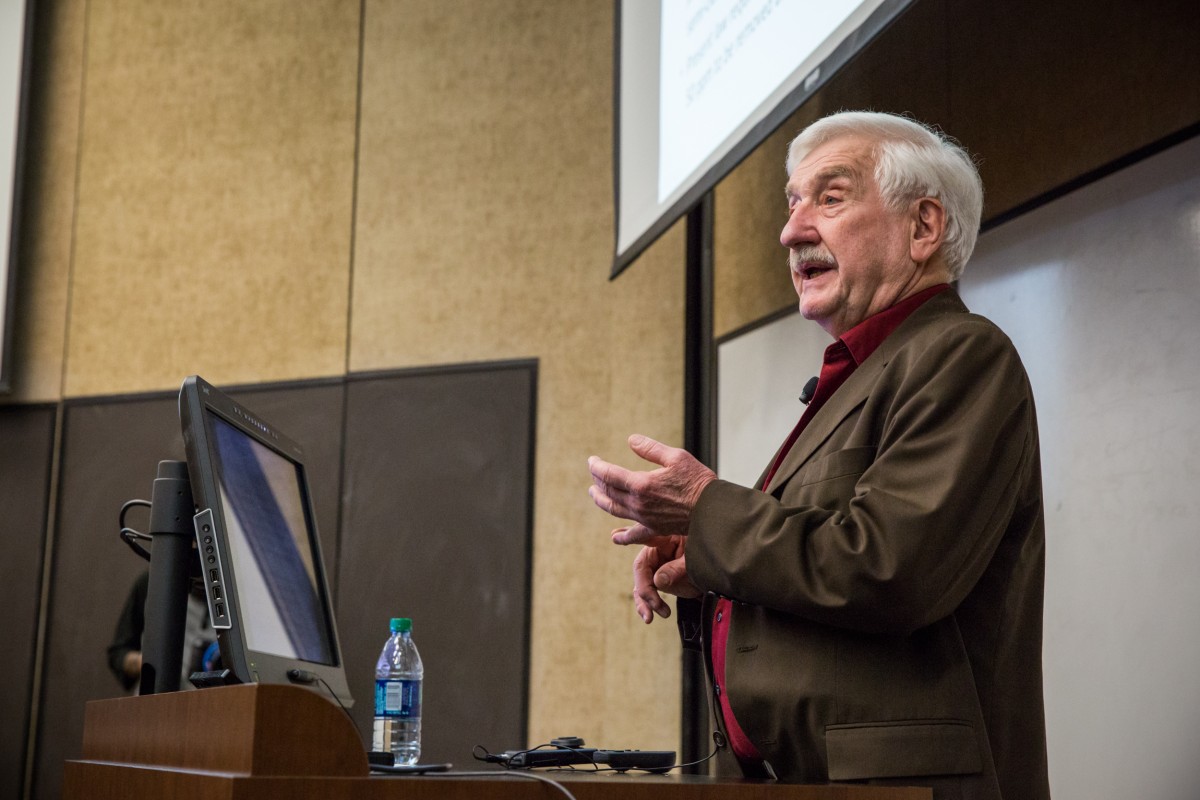A scientist with an extensive background in research regarding polychlorinated biphenyls lectured to a room full of Malibu residents, parents, teachers and officials, explaining in detail the health effects of exposure to the chemical.
David Carpenter, a public health physician, stood at a podium in a classroom of Pepperdine University’s law school on March 1, presenting several slides detailing the chemical makeup of PCBs, how people can be exposed to them what ailments are correlated with exposure to the chemical.
Carpenter focused on the types of PCBs that have a lower number of chlorine atoms, as those types more easily dissolve in water, can be inhaled through the air and can be absorbed through the skin, he said.
“All of those are possible routes to exposure at Malibu schools” Carpenter said.
In his presentation, Carpenter described ailments connected with PCB exposure. An area of focus was the neurotoxic effects of PCBs, which Carpenter said included reduced IQ, shortened attention span, impulsive behavior, poor school performance and an increased risk of attention deficit hyperactive disorder.
He said those effects mirror those caused by exposure to lead, whose use was banned in paint in 1978.
“It’s quite remarkable that these chemicals [that are] very, very different — lead being a metal and PCBs being an organic chemical — they do almost exactly the same things, at least in terms of these effects,” Carpenter said.
When talking about cancer, Carpenter said most of the PCB research conducted most often points three types: melanoma, non-Hodgkin’s lymphoma and breast cancer. Carpenter also pointed to research that suggests PCBs cause thyroid cancer.
Lisa Lambert, a sixth-grade physical education teacher at Malibu Middle School, spoke about her own thyroid cancer and Hashimoto’s disease diagnoses and blamed PCBs for that ailment.
“This diagnosis follows years of exposure to high levels of PCBs in my workspace,” Lambert said.
In a response to a question from the audience, Carpenter said students would have been more exposed to PCBs 20 years ago than would be exposed now because the chemicals dissolve into the caulk. However, he said the caulk, which has been in place for 20 years, still contains a high concentration of PCBs.
“This is not a new issue,” Carpenter said. “That doesn’t mean that now that we know about it, it shouldn’t be dealt with as an immediate issue.”
Carpenter said PCBs with low numbers of chlorine molecules don’t stay in one’s body for long, but added that prolonged exposure due to breathing poses a great risk.
“Nobody can stop breathing,” Carpenter said. “And so even though you can break them down rather rapidly, you’re continuously exposed.”
Carpenter said the use of PCBs in schools ranged from the chemicals being found in window caulking, paint and fluorescent light ballasts. He said all those situations pose a risk.
“What we need to do is get the PCBs out,” Carpenter said. “We need to find out where they’re coming from — whether it’s all from caulk, whether it’s from other sources, whether it’s from paint — and get them out because PCBs in the air are dangerous.”
One audience member, while fighting back tears, asked Carpenter if he would pull his child out of a school that contained PCBs. While Carpenter said that decision would have be made by each individual parent, he did provide an answer.
“If my kids were in those schools, I would be very torn,” Carpenter said.
Both Oscar de la Torre and Malibu resident Craig Foster, members of the Santa Monica-Malibu Unified School District Board of Education, attended the lecture and fielded questions from irate members of the audience who demanded an explanation as to why the Board would not fix the PCB problem.
“My position is very clear: I am not fighting the parents,” de la Torre said.
One member of the audience pressed Foster to explain what goes on during the Board’s closed sessions and why the Board “isn’t doing the right thing.”
“How do you explain the unexplainable?” Foster said.
But Foster quickly gave an answer to the audience member’s question.
“It’s like global warming,” Foster said. “Some people say, ‘Oh now, there’s no problem’ and some people say, ‘Yes, there’s a problem.’ The [School Board] members who support the policy, support the legal spending, support the cleaning regiment…believe the narrative that’s provided to them by Environ, that’s provided to them by Pillsbury.”
Foster said any time the issue of changing policies regarding PCB removal comes up with the entire Board, he and de la Torre vote to augment it, while the other five members do not.
Carpenter made it clear that in this opinion, no concentration of PCBs, however minute, should be tolerated.
“PCBs at any concentration…have no beneficial effect,” Carpenter said. “When I get asked what level of PCBs are safe, I say, ‘zero molecules.’ Any molecule is harmful. The more you have, the more harm.”
http://www.malibusurfsidenews.com/school/scientist-explains-various-health-effects-pcb-exposure




